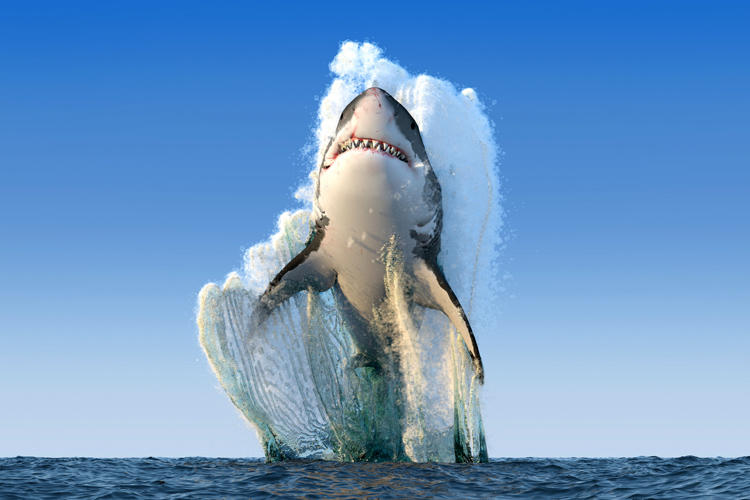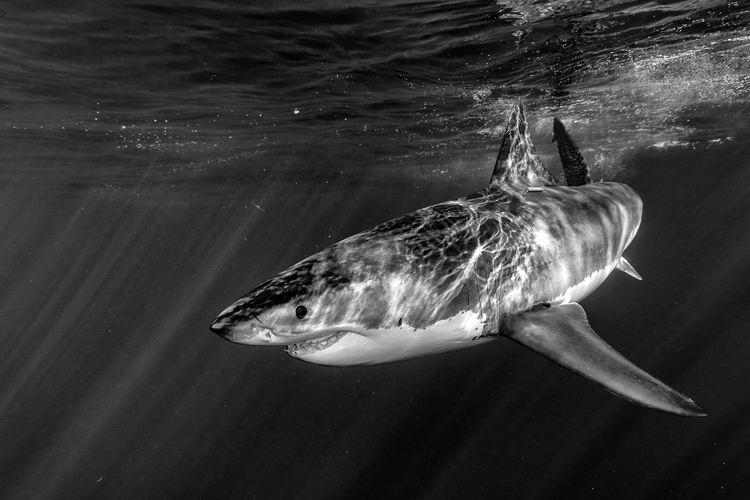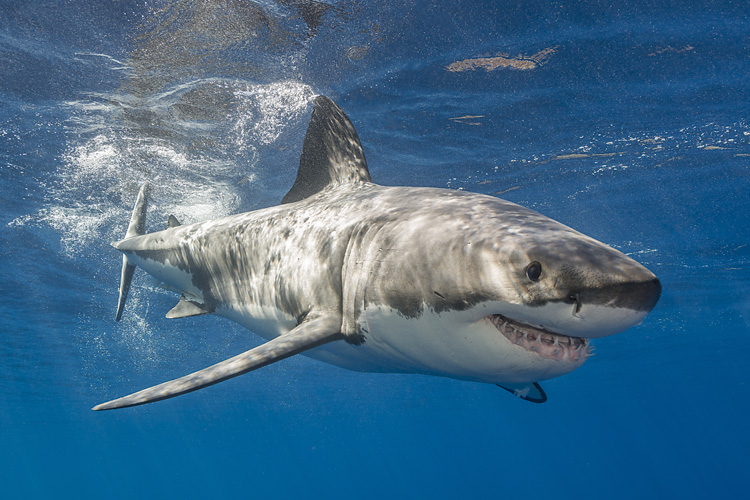The great white shark is the ultimate ocean predator. It is on the top of the food chain, and its only biggest living threat is humans.
Although great whites are not the largest sharks, they are the biggest predatory sharks living in the world's oceans.
It's every surfer's and beachgoer's worst nightmare and one of the most analyzed and scrutinized marine creatures in TV shows, documentaries, and Hollywood movies.
Nevertheless, it is not the vicious man-eater we tend to believe it is. Let's take a look at a few things you probably didn't know about the legendary great white shark:
1. The great white shark owes its name to its white underbelly;
2. The white pointer is the largest predatory shark in the world's oceans;
3. The average size of a great white is between 11.4-15 feet (3.5-4.6 meters);
4. The largest great white shark ever was found off the coast of Guadalupe Island in Mexico. "Deep Blue" measured 21 feet (6.4 meters) and weighed around 5,000 pounds (2,268 kilograms);
5. The ocean predator can propel itself at over 40 miles per hour (64 kilometers per hour);
6. The great white shark has six senses: sight, touch, taste, hearing, smell, and electro-reception;
7. The "men in grey suits" don't have eyelids; they only roll or rotate their eyes;
8. The great white rolls both eyes back to protect them moments before attacking and biting the prey;
9. A great white shark has 300 sharp, triangular teeth displayed in seven rows, but during its lifetime, it can develop and use over 20,000 teeth;
10. The biting power of a white pointer is around 18,000 Newtons (1,835 kilograms force) - it's the most powerful bite in the animal world;
11. The large majority of great white sharks live in temperate-to-cool waters located close to the shore, especially near California, Australia, South Africa, Hawaii, Peru, Chile, China, Japan, and the northeast of the United States;
12. A white shark maintains a constant body-core temperature of 79 °F (26.1 °C), regardless of surrounding water temperatures;
13. Unlike most sharks, the great white is a partially warm-blooded shark with a body temperature that is 55.4 °F (13 °C) warmer than the surrounding water temperature;

14. Great whites can dive to around 3,000 feet (914 meters);
15. Great white sharks are extremely curious and are often spotted around fishing boats, fishing nets, and diving areas;
16. Great whites stick their heads out or jump six feet (two meters ) out of the ocean's water to look around and spot prey, a behavior called spy-hopping;
17. Humans are not the favorite great white shark food - they prefer fish, rays, elephant seals, sea lions, sea turtles, and small whales;
18. Contrary to popular belief, the marine apex predator prefers to hunt its prey during daytime and in murky waters;
19. The torpedo-shaped fish is able to detect a group of seals using the sense of smell to spot them at a distance of two miles;
20. A great white gives birth to between two and ten "pups" but never takes care of them - when they're born, the young predators swim off, and they're immediately on their own;
21. The female great white shark reaches sexual maturity between 14-16 years of age;
22. Great whites have a life expectancy of around 30 years, but they can live up to 70 years;

23. The number of great white sharks living in the North Atlantic has declined by around 80 percent since 1986;
24. The great white shark's fingerprint is the dorsal fin;
25. The only marine animal that could kill a great white is the orca, also known as the killer whale;
26. White pointers are considered a vulnerable species facing a high risk of endangerment in the medium term;
27. Contrary to a widely propagated myth, great white sharks do develop cancer;
28. A great white shark is the world's largest predatory fish, scientifically named Carcharodon carcharias;
29. Great whites are responsible for between one-third and one-half of all yearly shark attacks;
30. Great whites can detect one drop of blood in 25 gallons (96.4 liters) of water;
31. In 2017, American swimmer Michael Phelps lost a simulated race against a great white by two seconds;
32. The origin of the great white dates back to between two million to twenty million years ago;
33. The stunning ocean predator is not a marine mammal - it's a cartilaginous fish;
Discover the most surprising facts about sharks.
